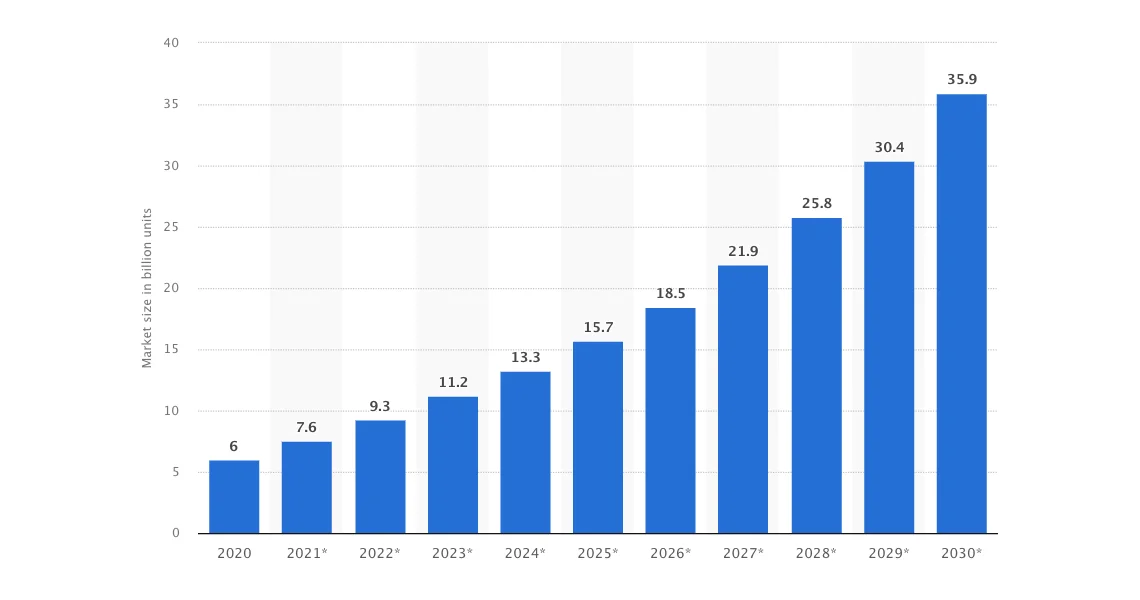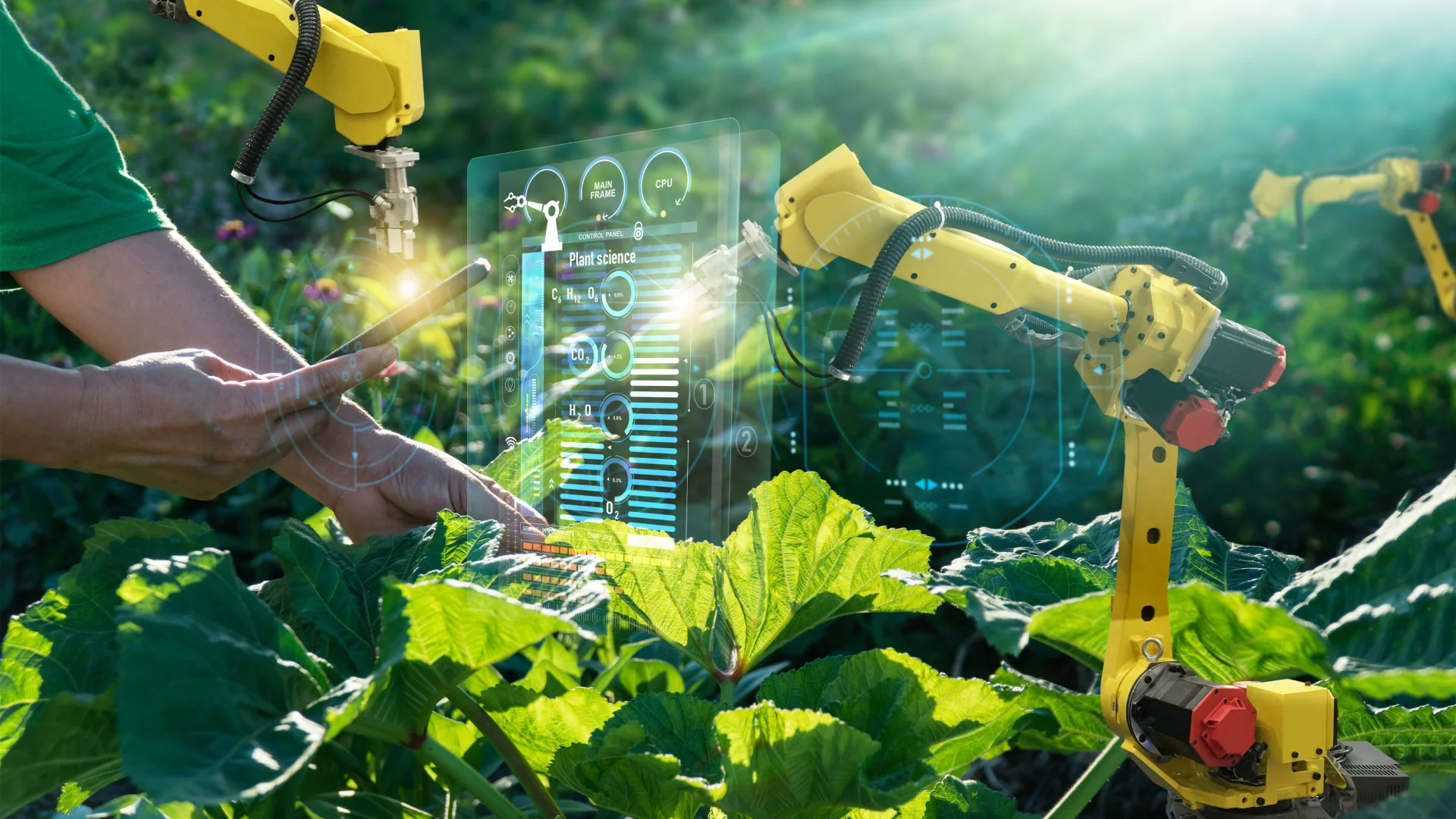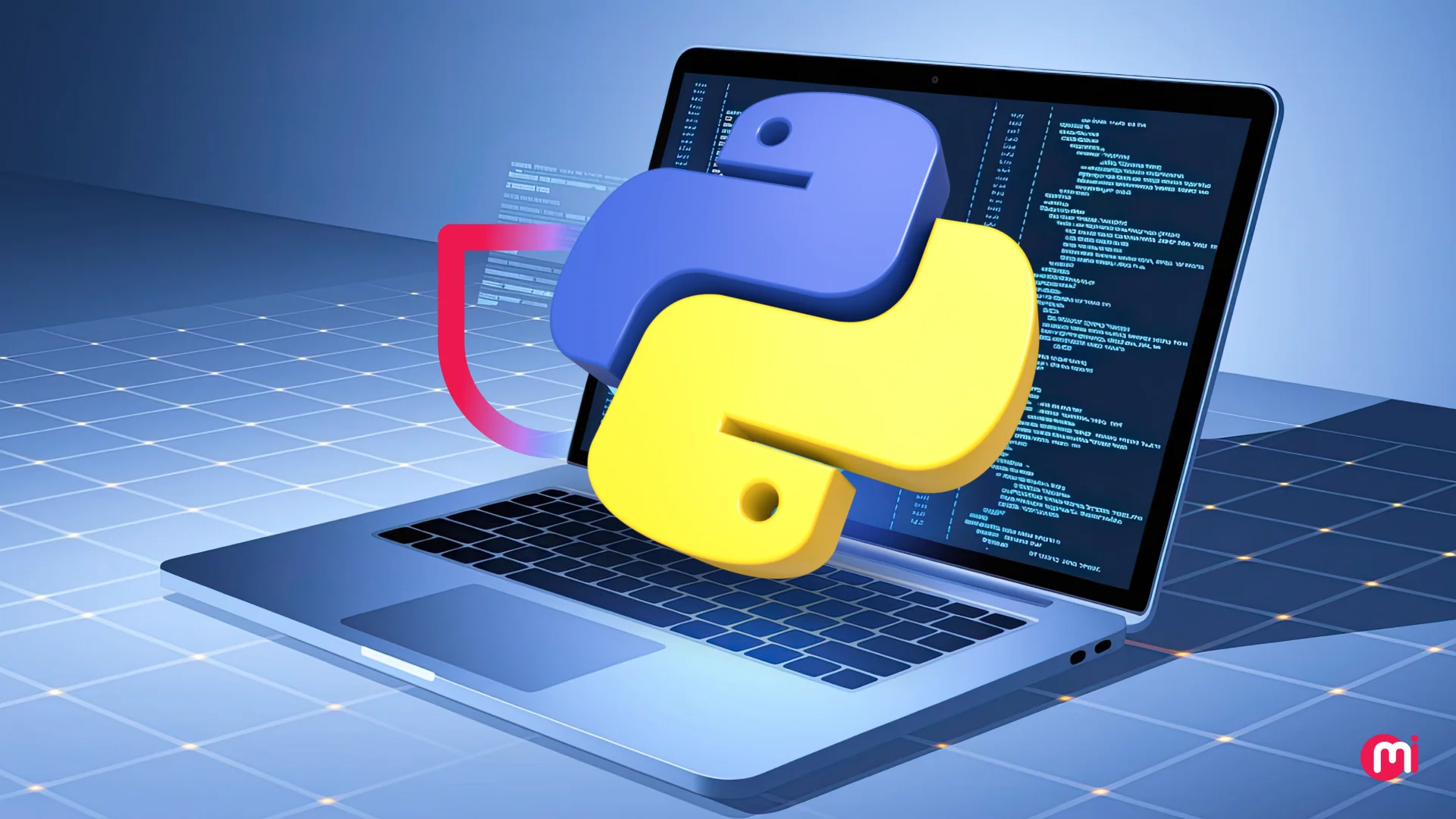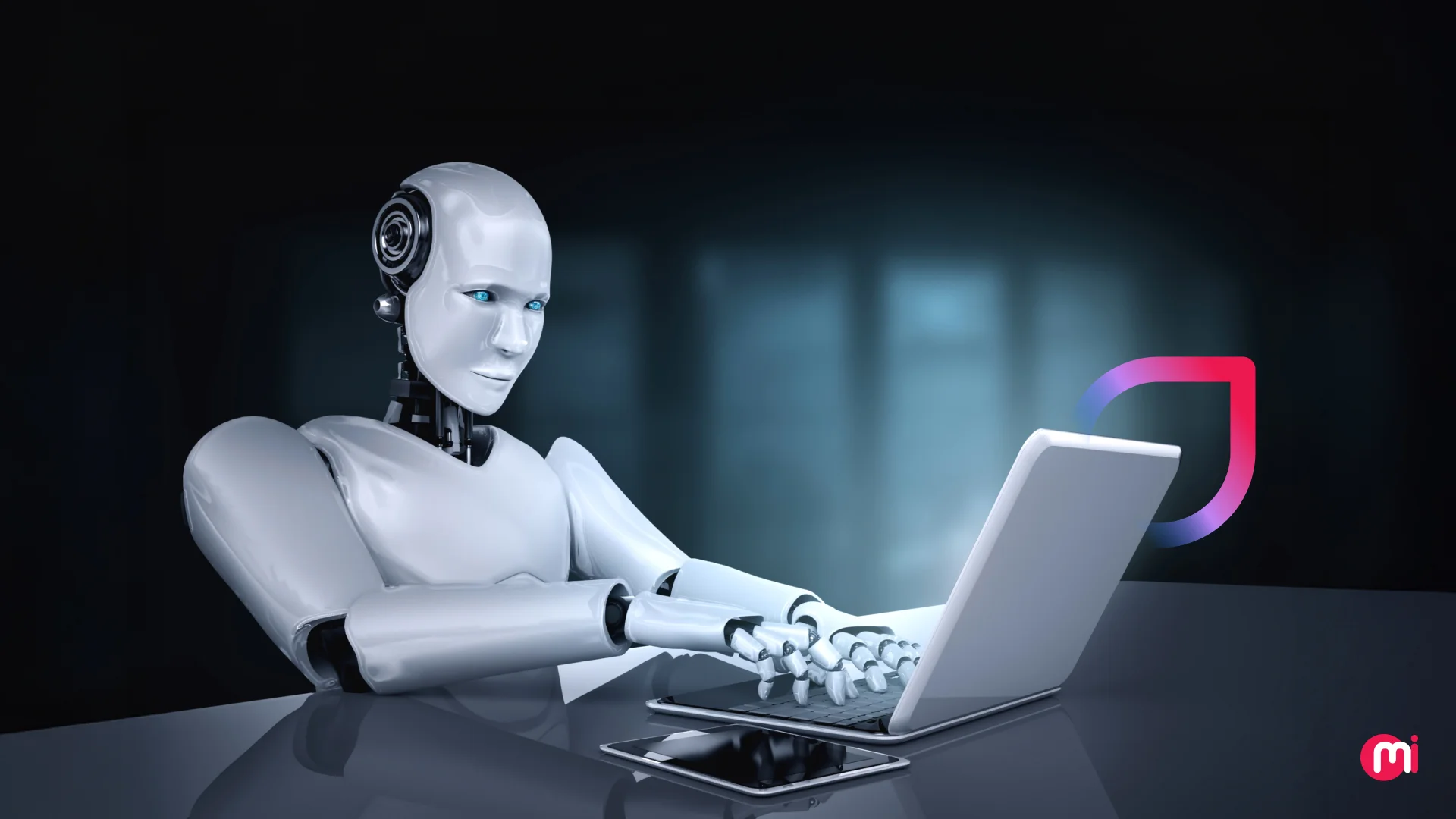How AI is Revolutionizing the Agriculture Industry?
- AI/ML
- January 24, 2024
Businesses are adopting AI to achieve efficiency and better results, so why should the agriculture industry be left behind? From soil examination to crop irrigation execution, the AgTech industry is set to witness an exponential implementation of AI in agriculture practices. Read on in this blog as it reveals everything you need to know about AI use cases in the AgTech industry.
Wouldn’t it be great if you had accurate data on soil composition at your fingertips? How about having an artificially intelligent personal assistant guiding you on crop selection based on historical and real-time data analysis? Imagine making spot-on decisions backed by precise data on all things farming!
You wish!
If this is your reaction then you are surely missing out on making the most of the latest technology – Artificial Intelligence (AI) in the Agriculture industry.
In recent times, when the pace of population increase is substantial, this rate is overburdening the farming industry to provide for the increasing global population. Only a transformative shift in farming practices can enable this industry to meet the pace of the growing food intake demand. What could be better than an amalgamation of age-old farming wisdom and cutting-edge AI technology?
With AI being the new normal in many industries, the farming community of some countries like Australia, Brazil, and more has already implemented AI in some aspects of farming practices to avail of its benefits. The AgTech industry is set to see an exponential implementation of AI in various farming practices. This is why it becomes inevitable to understand how it is easing the challenges farmers usually face in traditional acculturation practices.
Furthermore, it is essential to learn about the application of AI in agriculture, and how the farmers can benefit from the implementation of these applications.
But before that to get an overview of artificial intelligence in agriculture projects, let us have a look at its current stage in the agriculture industry.
Current State of AI in Agriculture Market
The ongoing research and development continue to bring new innovations in the field of agriculture and with all the buzz around AI and its applications in various industries, here are some statistics about AI in agriculture market:
- AI in the agriculture market is projected to grow from USD 1.7 billion to USD 4.8 billion in 2028 with an expected Compound Annual Growth Rate(CAGR) of 23.1% during the forecast period of 2023 to 2028.
- The market value of smart farming worldwide is expected to grow from approximately 15 billion U.S. dollars in 2022 to 33 billion U.S. dollars by 2027.
- With the increasing use of AgTech, the global smart manufacturing market is forecast to grow to over 650 billion(277 billion U.S. dollars in 2022) by 2029. Smart manufacturing uses robots and big data analytics to make production faster, more eco-friendly, and adaptable.
- According to Agriculture industry insights by Statista, the global agricultural robots market is expected to grow to around 36 billion units by 2030.

As the forecasted numbers suggest, the future of AI in agriculture seems exceptionally promising – the one marked by innovation, sustainability, and efficiency, harnessing the power of AI to cultivate a more resilient and productive agricultural landscape.
Challenges Faced by Farmers by Using Traditional Methods of Farming
As the world witnesses a surge in population and climate uncertainties, the limitations of traditional farming methods become increasingly apparent. Here are some of the challenges faced by farmers who practice traditional farming methods, shedding light on the urgent need to embrace innovative approaches:
Unpredictable weather conditions
Conventionally when the farmers want to plan their agricultural activities, they do not have access to accurate weather forecasts. Without timely information, farmers face increased risks, affecting their decision-making regarding planting times, irrigation schedules, and harvesting periods. Lack of precise weather forecasts often led to improper planning, affecting crop yields and overall farm productivity.
Inaccurate decision-making
Without the use or availability of advanced technologies or access to advanced tools and real-time data, the farmers rely entirely on past experiences even for making critical decisions regarding soil preparation, crop selection, planting times, and more. These ill-informed choices often lead to inaccurate decision-making and eventually lead to deficit harvest.
Pest and disease management
In the traditional approach to pest and disease management, the farmers often realize the infestation or disease spread when substantial damage is already done to the crop parts. This leads to substantial crop losses, with estimates suggesting that 20% to 40% of global crop production is lost annually due to pests.
Labor intensiveness
Farming has always been seen as a physically demanding and time-consuming practice led by a considerable workforce. Apart from the dependency on labor to get the work done on time, it adds to substantial operational costs making farming a hefty affair.
Food waste and loss
One of the major situations that often come up in the farm-to-table supply chain is food waste and loss. This issue is a result of the unavailability of efficient tools for conventional farmers to effectively anticipate market demand accurately. It often results in overproduction or underproduction, leading to avoidable wastage.
What is the Role of AI in Agriculture in Each Step of Agriculture Lifecycle?
Humankind has come a long way from the first agricultural revolution dating back to 10,000 B.C. The use of AI in agriculture is also referred to as the silent revolution changing the course of age-old farming practices.
In this modern era, where technology and tradition harmoniously coexist, AI emerges as a pivotal force reshaping every step of the agriculture lifecycle. From preparation of the soil to sowing, irrigation, harvesting, and storage, here is how AI can be seamlessly integrated into each phase of the agriculture lifecycle:
Preparation of soil
Without AI or Tech applications in this process, farmers face uncertainties, unpredictability, second-guessing, and more while preparing the soil. It was art rather than science as farmers had to rely on their intuition backed by years of experience with the soil to decide on every aspect of soil preparation – tilling, plowing, adding organic matter, constructing ridges and narrows, and more.
The crop has to pay the price for lack of precision!
With AI, it’s no more guesswork – just accurate data guiding their decisions!
AI-powered soil sensors or AI-driven machinery, equipped with smart sensors are used to collect the real-time data of the soil. Further AI algorithms analyze the chemical composition of soil samples, giving insights into the key indicators – soil composition, nutrient levels, moisture content, and more. Apart from that, AI algorithms can be used for analyzing historical weather data and predicting future patterns.
Farmers can leverage this data rather than depending on their intuition and experience to make informed decisions for getting the right mix of organic matter to prep the soil.
The result?
A perfectly prepared bed for seeds, promising a plentiful harvest!
Sowing of seeds
Once the farmer has prepared the soil it is time to sow the seeds. Though the Green Revolution transformed agriculture with high-yielding variety (HYV) seeds, mechanized farm tools, and more, the farmers overcome the issue of precisely sowing the seed(at a precise spacing and depth) by using the seed sowing machines however they still had no alternative than anecdotal predictions when it came to finding the optimal sowing window.
Here is how AI can play a critical role in this step of the agriculture life cycle:
First things first, the farmers can leverage AI algorithms to analyze historical weather data to get insights into favorable windows for sowing the seeds eliminating the risks associated with relying on traditional sowing calendars. These AI-powered systems can be designed to send timely alerts in case of any unexpected rainfall or temperature fluctuations.
Though HYV seeds promise the farmers surplus production, soil composition and weather conditions can affect the amount of produce. Machine Learning algorithms can be used to provide personalized recommendations of best-suited seed varieties based on the analysis of the above factors.
Further, the farmers can use AI-powered drones to scan and map the field with incredible detail. Which can be used to guide automated seed-sowing equipment/machines to ensure uniform distribution across the field.
Adding fertilizers
When it comes to adding fertilizers farmers often face a dilemma of “too much or too little”.
Excessive use of fertilizers causes nutrient runoff causing environmental pollution apart from harming the crops. According to research, out of the 115 million tonnes of nitrogen fertilizer given to the crops, 75 million tonnes of nitrogen runs off into our rivers, lakes, and natural environments.
Undersupply of fertilizer results in overutilization of the naturally available nutrients of the soil and leaving it unproductive over the years of farming.
To dodge this anticipation and skepticism of fertilizer mix, AI algorithms provide a tailored proportion of fertilizers for the soil based on the soil’s nutrient levels and selected crop requirements. Just as at the time of soil preparation AI algorithms are used to get accurate data on various aspects of soil, they can be used to analyze the nutrient content of the soil.
Irrigation
With 70 percent of all water withdrawals used in farming, the Agriculture industry would be the major cause and casualty of water scarcity in the upcoming years. Conventional irrigation decisions either result in excessive or inadequate watering. Both result in crop harm along with freshwater waste. These days, optimal use of water resources is something that farmers seek solutions to.
The use of AI in agriculture shows great potential to reduce the agriculture water footprint significantly.
AI-powered solutions, algorithms, sensors, equipment, and more can be used in the following aspects of irrigation:
- Optimizing irrigation schedules based on sensor data of weather, crop conditions, soil moisture level, and more.
- Adjust water flow rates and distribution patterns based on real-time data.
- Predict and identify potential droughts based on historical data and current environmental conditions.
- Monitor crops for signs of water stress by using satellite imagery and remote sensing.
- Choosing crop varieties is best fit for local climate conditions and requires less water.
- Monitoring water quality to prevent contamination.
- Help farmers adopt water-efficient practices.
Crop health monitoring
Apart from diseases, plant pathogens cause havoc on overall plant health. Out of the total average crop losses of 36.5%, about 14.1% come from diseases, 10.2% from insects, and 12.2% from weeds. Whether it is water-based stress, insect-borne diseases, lack of nutrition, or more, that the crops are suffering from, detecting it early can enable the farmers to take the necessary steps required to stop the condition from escalating.
With AI farming, farmers can level up plant health monitoring. They can benefit from AI-based solutions like AI-powered sensors and drones for real-time patient health monitoring, AI-powered image recognition, disease-detecting AI software, and more.
Weed protection
Worldwide, about 1,800 types of weeds cut down plant growth by around 31.5%, causing a yearly economic loss of $32 billion. With plants having a lesser amount of nutrients and sunlight as stolen by weeds, they further become more vulnerable to pest attacks. It also adds to the cost of herbicides along with efforts to add it in the field to eliminate weeds.
Bots equipped with computer vision integrated with the combined power of AI and machine learning can enable the farmers to automatically eliminate the weeds along with quicker identification. The bot can also accurately calculate the amount of herbicide needed in the field by analyzing various criteria like weed density, crop type, field size, and more.
Intelligent sprayers can enable effective monitoring of the amount of herbicide sprayed on the weeds, to reduce the amount of herbicide being wasted or used. The target application of herbicide would result in cost savings along with optimized elimination of weeds.
Harvesting
It has always been one of the most labor-intensive, costly, and time-consuming tasks of the entire lifecycle. Further, there was always a risk of over-ripening when harvested too late or crops being premature when harvested very early. Farmers often relied just on visual inspection(prone to errors) to check the ripeness of crops.
Here is how AI in agriculture can be of use in the harvesting stage:
- AI is useful for enhancing crop yields and can even predict the best time to harvest crops.
- An automatic harvesting robot equipped with a camera, AI software, and mechanical arms can be used to harvest only the ripe produce in the field.
- AI can also be used for accurate yield mapping.
- Sorting the harvested produce based on size, shape, color, and volume with higher accuracy and speed.
Storage
The major concern post-harvest is preserving the harvested produce. Stored harvested produce is subjected to environmental conditions, unpredictable pests, and the constant threat of spoilage. When affected by any of this, the produce loses its quality and eventually market value. Longevity can only be achieved with accurate and consistent monitoring and regulation of storage conditions.
Here are some examples of artificial intelligence in agriculture that can enable farmers to revolutionize their approach to storing the harvested produce:
- Smart storage units equipped with AI-powered sensors, integrated with AI algorithms, constantly monitor temperature, humidity, and other factors.
- Further, AI-driven automated systems can facilitate the framers to streamline the entire storage process from inventory management to shelf life predictions(powered by AI’s predictive analytics capabilities).
The application of AI in agriculture is not just a technological advancement but a paradigm shift in the way farmers approach these agricultural processes.

Benefits of AI in Agriculture
From revolutionizing the way farmers approach their farming practices, amplifying yields, and contributing to a more sustainable and resilient future for agriculture, here are some of the benefits of AI in agriculture that farmers avail:
Efficient resource utilization
With AI, farmers can optimize the use of resources such as water, fertilizers, and energy. AI algorithms, coupled with sensors, analyze real-time data from the fields, providing insights into various aspects of soil and crops. This enables the farmers to tailor their resource inputs according to the specific needs of each area of the field.
Sustainable agriculture practices
Sustainable agriculture practices, such as precision irrigation and AI-driven crop monitoring, become accessible and efficient through technological innovations. The smart sensors collect real-time data on soil health, moisture levels, and crop conditions. This information enables farmers to make informed decisions about irrigation, fertilization, and pest control, minimizing waste and maximizing efficiency.
Easy access to insightful data
AI-powered systems collect real-time data on various factors like soil composition, moisture levels, and crop conditions. With easy access to such comprehensive and timely information, farmers can make informed decisions about crop management, fertilization, irrigation, and pest control.
Predictive analytics
Farmers can leverage historical data and AI algorithms to foresee future trends and make informed decisions. For instance, AI algorithms analyze historical weather data, soil conditions, and crop health to provide accurate predictions on the best time for planting and harvesting. This empowers farmers to plan effectively, reduce uncertainties, and enhance overall crop productivity.
Better analysis of market demand
With AI, farmers can tap into a wealth of insightful data, including market trends, consumer preferences, and historical data. AI algorithms process this data to provide farmers with precise insights into what crops are likely to have higher demand. This empowers farmers to make informed decisions about crop selection and production planning, ensuring that they align with the actual market demand.
Early detection of potential threats
Unlike visual inspection, AI equipped with advanced sensors and image recognition technology identifies signs of diseases, pests, or nutrient deficiencies by continuously monitoring crops and analyzing data. This early detection empowers farmers to take timely and targeted actions, preventing the escalation of issues.
The impact of artificial intelligence in agriculture has a combined effect resulting in greater efficiency and effectiveness of the agriculture lifecycle.
Collaborate with MindInventory, Your AI Software Development Partner
When wanting to harness the power of artificial intelligence in the least digitized industries like agriculture, it is essential to partner with an AI software development company with a proven track record of crafting cutting-edge AI solutions across diverse industries. At MindInventory, we bring a wealth of experience and expertise to the table.
Our team of mobile app developers is well-versed in the intricacies of AI software development, specially tailored for the agriculture sector. We have the know-how to tailor our developments to suit the specific needs. Hire AI developers from our team who will work closely with you to understand your requirements, address your challenges, and deliver solutions that make a tangible impact on your agricultural operations.
Our commitment is simple to empower your agricultural endeavors with cutting-edge AI solutions that are not just advanced but also easy to understand and integrate into your operations. If you are seeking consultation for your upcoming AI in agriculture project, let’s connect and sow the seeds of success!
FAQs on AI in Agriculture
AI is extensively utilized in agriculture for a variety of purposes, from determining the lack of nutrients in the soil through chemical composition to predictive analytics of farming processes. It predicts crop diseases, identifies optimal patterns, predicts the optimal mix of agronomic products, and forecasts pest outbreaks and market prices. Additionally, AI facilitates smart micro-irrigation, market demand prediction, precision spraying, and monitoring of livestock health and behavior, among other applications.
The potential of AI to revolutionize farming practices is immense. However, farmers may require time to adapt to and become comfortable with its various applications. Nevertheless, the future looks bright, with AI fueling efficiency and productivity in agriculture.
With clear signs of driving significant advancements, it will ensure food security for a growing global population while promoting sustainable farming practices. AI-powered technologies such as precision farming, drone and satellite imagery analysis, and predictive analytics offer farmers unprecedented insights into crop health, soil conditions, and weather patterns.
Generative AI acts as a personalized advisory to farmers, providing them with data-backed information in response to questions (voice or text inputs). It can also serve as a personalized tutor by giving farmers access to educational content on agriculture. The recommendations and information provided by generative AI solutions can effectively improve crop yield, support decision-making, and optimize resource management.
Though AI is an advanced technology, software solutions with easy-to-use interfaces make it accessible for farmers to leverage its benefits. However, some level of specialized training is still beneficial to maximize the potential of this technology.













